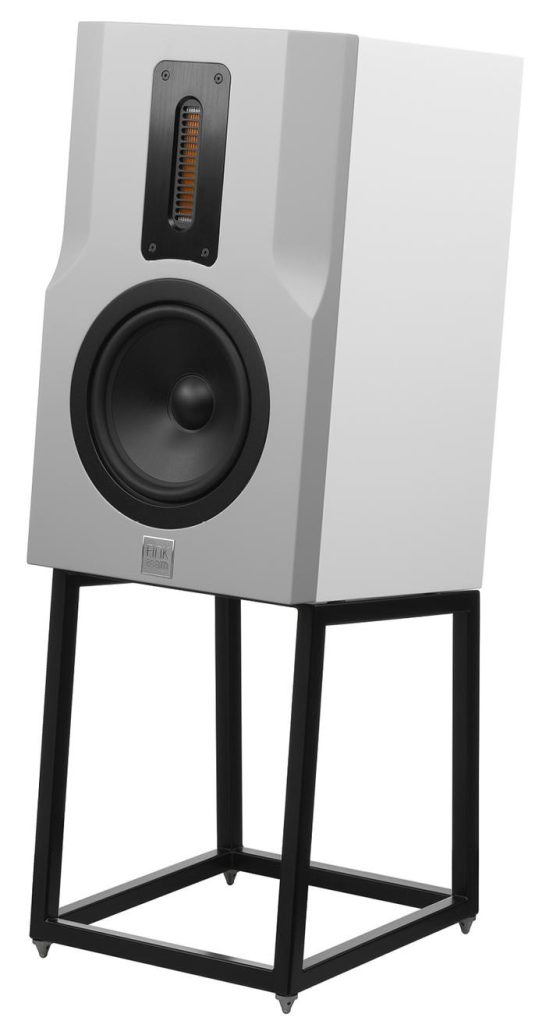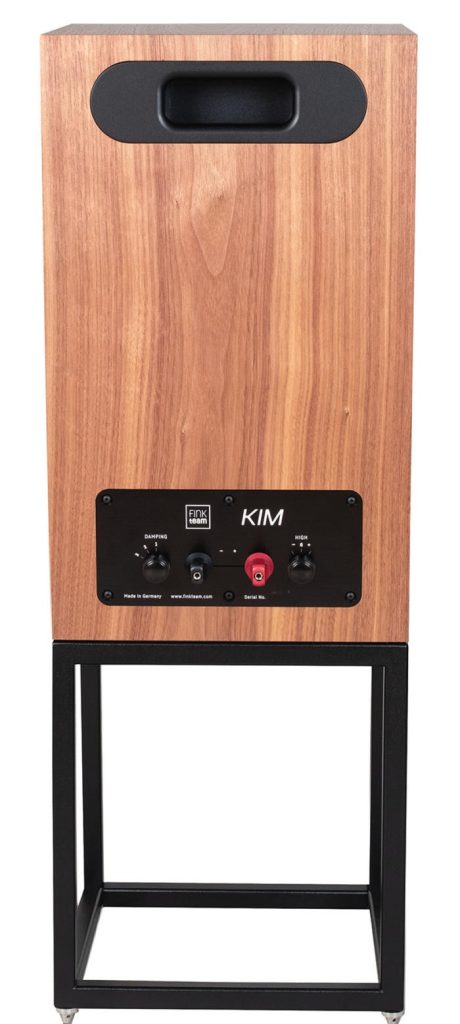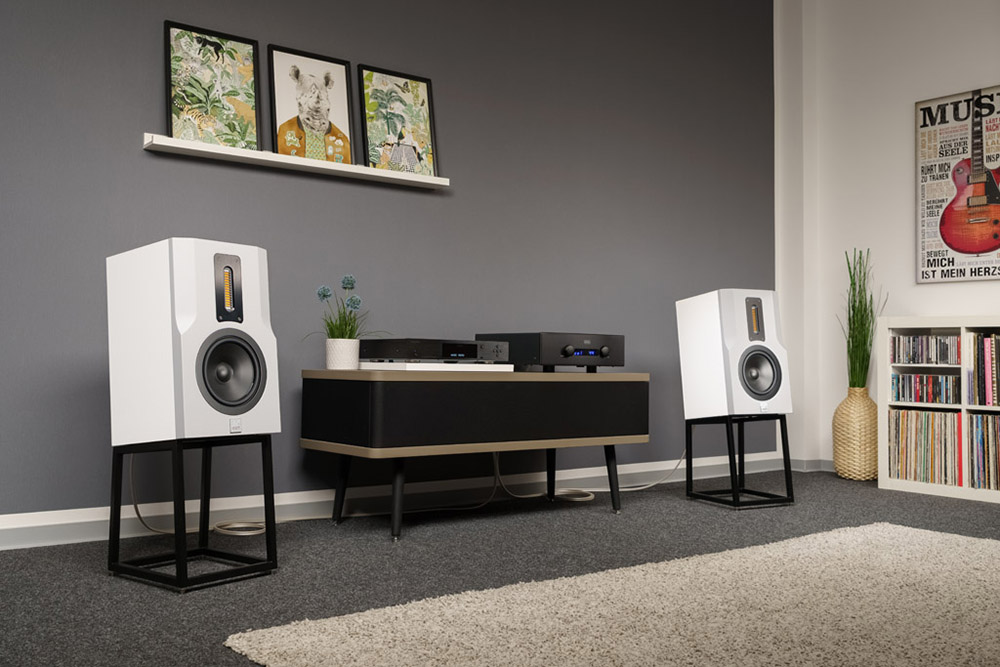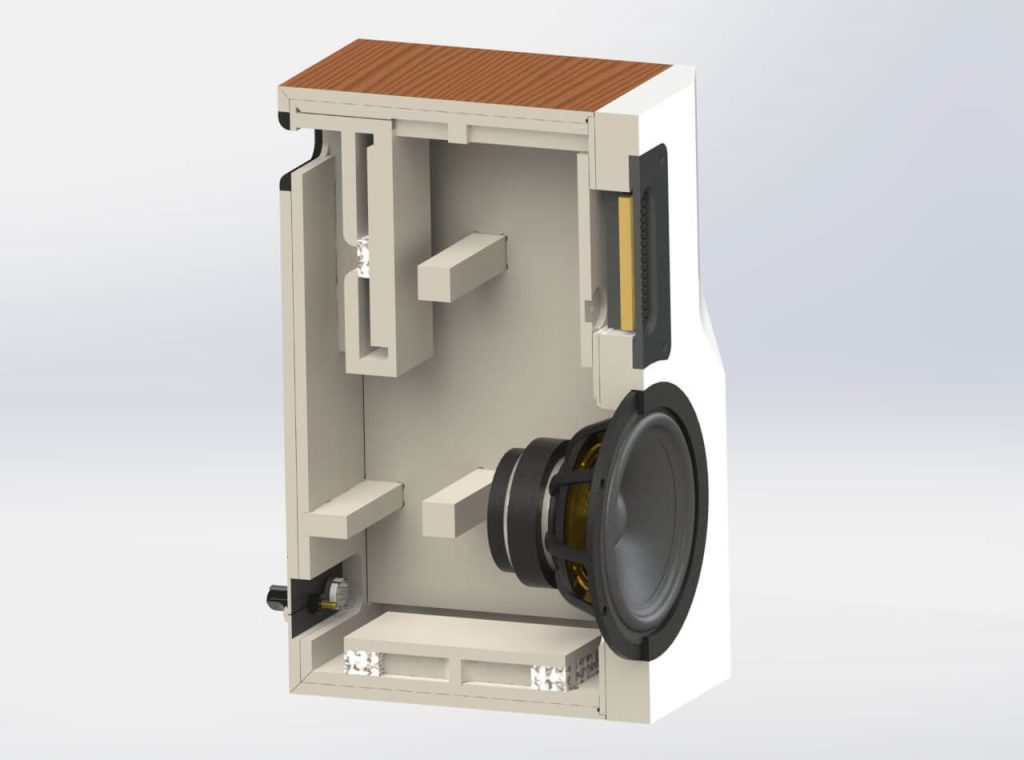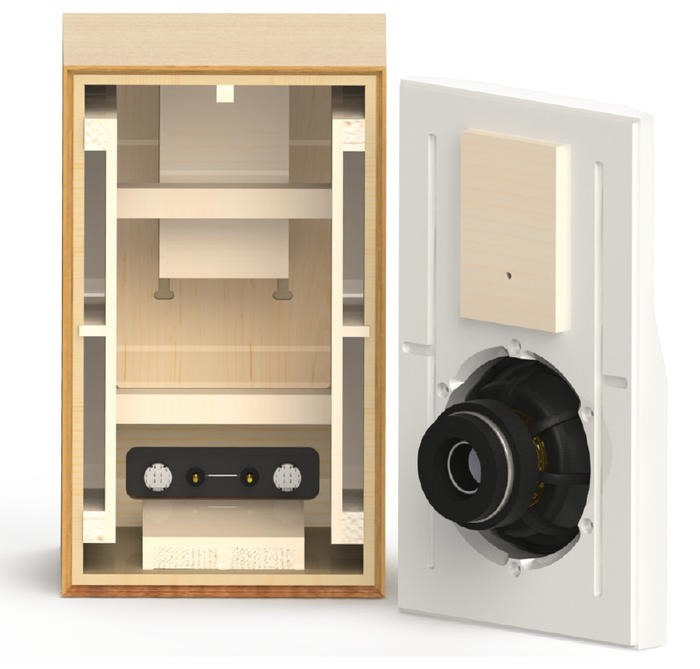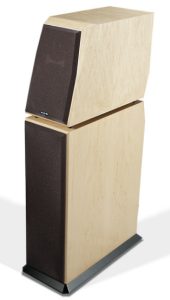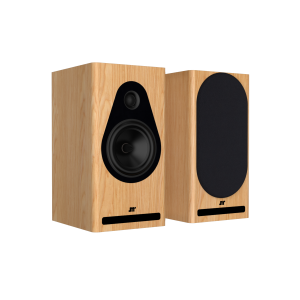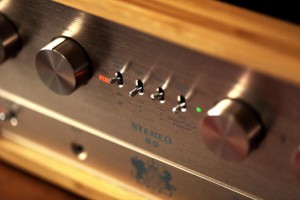Dr. Tom Davis has a longtime association with Positive Feedback. He was a very active contributor to the magazine back in the 1990s during our paper 'n ink days and a hale and hearty audio friend.
He is now joining us once again, and I could not be more pleased! His writing is always worth reading....
Dr. David
The story that will unfold over several installments here on PF follows decisions made in regard to "the stereo system" over the past two years, as I negotiated downsizing from a house to an apartment following my retirement from 35 years of teaching philosophy at Whitman College in the small southeastern Washington town of Walla Walla.
Here I assume that I'm not alone among the boomer denizens of high-end audio. Indeed, I suspect that a good-sized demographic is now facing the dilemmas of downsizing that I've been negotiating over the before, during, and after phases of having plenty of space for a fairly large system to the distinctly restricted space of a two-bedroom apartment in the not quite three-year old The Lodge in downtown Walla Walla.
What makes, I believe, my own story worthy of attention here at PF is that I began to make financially significant choices in anticipation of downsizing that—while I thought they made perfect sense when I made them—turned out to be, well, wrong, when I was actually using the tape measure to parse out where the system was going to go in the 13 by 17 foot living room/kitchen of my new two bedroom/two bath apartment. And then there were decisions that I thought made perfect sense after moving into said apartment that, well, turned out to be wrong after actually living six months in the new smaller space with my new neighbors.
Indeed, now eight months into my first year of apartment living, I'm still in the process of relearning the difference between "right" and "wrong" choices in downsizing "the stereo system." So, again, I think it worthwhile to share the assumptions I was making, so to speak, in my head, that turned out to not be the right assumptions only after lived experience forced me to, for example, go: "It's true that these exceptional speakers that I bought looking forward to living in an apartment just won't work as well as…."
So let the first installment of my lessons of lived-experience tale focus in, yes, on precisely those speakers that I bought while I still living in a 2400 square foot house that I thought would be perfect for the anticipated move to a not quite 1000 square foot apartment.
Finkteam is not a household name in American high-end audio, even if it is the brainchild of Karl-Heinz Fink and his German audio-consulting firm, and now speaker company. Expressly credited or anonymously "behind the scenes," Herr Fink and his high-tech measurement-driven firm has been hired by both large international and small boutique firm to fashion design that have consistently won awards all over the world before he decided to put his team's name on his own designs.
Finkteam's KIM is the second commercially marketed design after the more statement level "Borg" Both have been highly reviewed in Europe and most significantly by Martin Collums in England before a smattering of reviews in American high-end publications.
I bought one of the first KIMs imported to the States and listened to it for not quite 18 months while bringing my 35 years of teaching philosophy to an end, selling my house, and moving into an apartment. Before the actual purchase, in true audiophile fashion I had read all the German and English reviews and had an excellent feel for, let's call it, the elegance of its theoretical superiority as a design. But what made me shell out for my olivewood/white version of the KIM (the price now is just below $15,000) was the quite specific design goal that guided Herr Fink. The KIM is meant to quite literally fit a domestic living space, indeed to more or less disappear among the rest of your lovingly chosen furniture and not call attention to itself until, of course, it's time to immerse yourself in the claim of music.
Let me now put on my "high-end audio reviewer hat" to lay out just how successfully the KIM did indeed disappear into the living room of my former house.
Enter KIM
As I took Finkteam's KIM out of its shipping box, I already knew the first disc I'd play would be Rosanne Cash's 10 Song Demo. I've been listening to its final track "Mid-Air" since its 1996 debut, including using it as a listening reference during my stint writing equipment reviews 25 years ago. So, yes, I always use "Mid-Air" to assess changes in the gift of music in my living room.
With KIM freshly set up, I cue in track 11 and press play and suddenly I'm with Rosanne Cash as if she is standing right in front of me, her familiar voice inflecting the intent of these lyrics with such crystalline intimacy that new subtleties of meaning emerge that I've missed for all these years. "Mid-Air"is built around the choral refrain, "But will you be there?" where, I can hear so clearly now, the force of the song as a whole rides on precisely how the inflection of that there changes as it is repeated throughout the song. Even on quite literally a first listen, I found myself smiling. KIM had just introduced me to a very familiar song reborn.
How can these speakers be so intimately revealing in a way that feels as natural as sitting down to listen to a close friend? How did Karl-Heinz and his team pull this off?
The answer, I think, lies in understanding how this speaker has been systematically designed to be a whole that is so much more than the sum of its parts. The way music can come alive in your living room follows from lots of parts in lots of interweaving wholes. KIM's design weaves together the respective gestalts of speaker-in-room, speaker-in-system, and then the speaker itself into that compellingly musical whole that brought a smile on my first listen to Cash's "Mid-Air." Let's consider how KIM has mastered each of these gestalts in turn.
KIM in my then living room
KIM's design-brief began with imagining a speaker that would most naturally fit into a normal living room. At a height of 34.5 inches on its 5 degree angled stands, KIM is no taller than a window-sill, a table-top, or a couch, so that it comfortably fits with the rest of the furniture in a typical domestic space. This means that the beautifully constructed and master-craftsman finished KIM complements the way you have made the room in which you place it an inviting space. My living room, however, presents distinct challenges for a moderately sized speaker like KIM.
My former house was a multi-level L-shaped 1955 Mid-Century home whose long north and short east sides are floor to ceiling glass walls overlooking a creek. The three levels of its interior are divided by half-walls in an otherwise open floor plan. KIM stands 3.5 feet away from the north wall of glass behind it within a shallow isosceles triangle with the listening couch 7.5 feet away from the 7 feet separating the speakers. The ceiling above KIM is sloped at a slowly rising 15 degree angle for the 19 by 15 foot living room where each of the sides of the speakers open into the spaces of the master-bedroom partially separated from the living room by a double-sided open fireplace and then the step- down lower kitchen-dinning room. And finally 3.5 feet behind the listening couch is a book-lined partial wall bounding a 3.5 foot wide hallway for the bedrooms and bath. How does KIM's design handle such a complex acoustic space?
The top edges of KIM's cabinet are sculpted to promote the wide distortion-free horizontal dispersion of its AMT tweeter whose relatively narrow vertical radiation pattern is height restrictive in a way that reduces ceiling reflections. Its rear port incorporates a Helmholz resonator to control and smooth its tuned 37Hz room loading. On its rear speaker-hookup panel a rotary switch adjusts the AMT tweeter output in two subtle 1dB steps (-1, "neutral," +1) to help address combinations of hard reflective (that floor to ceiling glass wall) and soft absorptive (my listening couch and reading chair) surfaces. After experimentation I've left it in the "neutral" position with the AMT tweeters toed in directly at my ears at the 17 inch listening height of the couch. When all the "in room" adjustments are made and I press "play," KIM completely disappears within the most expansively dimensional soundstage I've experienced. I have never heard a speaker that so effectively gets out of the way of the music as KIM does. And yet again, this follows from specific design goals.
As Martin Collums lays out in his HiFi Critic KIM review, the measured power dispersion into a room is exemplary. That power dispersion is also remarkably free of both driver and cabinet distortion (to which I'll turn below). Distortion-free coherent power dispersion represents the best chance for music to come alive in your listening room. And moreover, after tuning-in speaker/ear listening height, KIM frees you from the typical audiophile "head-in-a-vice" listening position. I can shift position on the couch, or share it with another person, and still relax into the music. This leaves the final "in room" challenge the low bass loading in my complex open-floor plan.
When Jonas Starker bows down for the lowest notes of Bach's Cello Suite #1, his cello is fully there in the palpable air of the Mercury Living Stereo recording (more on which below). KIM completely supports the 40Hz foundation of most instrumental music, but, no, an eight inch mid-woofer is not going to move enough air to support the depths of, say, large scale organ pieces. I have tried KIM with Zu Audio's Undertone subwoofer. But even after extended experimentation, I could not get the Zu to disappear in the way that KIM by itself simply disappears. Given that I almost always listen to the human voice or string-quartets or solo cellos and pianos, I have yet to run into a recording that insists on the need for a subwoofer. So after the first two weeks of experimenting, I removed the Zu and it has not returned. Perhaps Finkteam will accept the challenge to design a subwoofer that can disappear in the same remarkable way that KIM does. In the meanwhile, even in my complex open-floor space, KIM's below 35Hz bass limitation does not detract from the way it simply removes itself from a startlingly articulate presentation of the full range of instrumental music or, most importantly for me, the human voice in all its expressive power.
KIM in my then system
The remaining 3-position rotary switch adjustment on KIMs rear panel is for impedance matching with your amplifier. Its "neutral" position is for high dampening factor contemporary solid-state amps with its two other positions meant for lower dampening, especially tube amps. This adjustment can also slightly modify bass-loading into a room. With an impedance curve low of 5.7 ohm at 160Hz and an overall 8 ohm average KIM virtually assures the right impedance fit with both your amp and your cables (mine are low capacitance Inakustic RCA interconnects for digital, preamp/amp with speaker cables with Zu Event II power cables, all air-suspended off the floor with Inaukustik and Audioquest).
In my system KIM is driven by the Pass XA-25 amp with a Stereophile-measured 80-watt output at 8 ohms but a relatively low gain of 20 dB. Originally I was using the Pass HPA-1 headphone amp in preamp mode whose 8 dB gain meant a total system gain of 28 dB that proved sufficient for most but not quite all the music I've tried over the past five weeks of listening. This prompted me to replace the HPA-1 with the 18 dB high-gain Lamm LL2 for a total system gain of 38 dB that covers even very low level recordings like Rickie Lee Jones' eponymous album. The Lamm LL2 itself added a dimension of timbral realism to instruments and voices that KIM immediately revealed.
As long as you have at least 30 dB of overall system gain, KIM's moderate 86 dB sensitivity combined with its benign 8 ohm nominal impedance curve and its ability to adjust impedance damping to a wide range of both solid-state and minimum 20-watt push-pull tube amps allows you to take full advantage of KIM in most any system. Let's turn now to the gestalt of the speaker itself.
KIM herself
KIM arrived at my house tightly embraced by deep foam-plastic inserts in high-quality cardboard boxes on a shrink-wrapped shipping-pallet. At just over 50 lbs including its integral stands, unpacking and set-up was a one-person job aided by the clever design of the top-mounted rear port that can also be used as a handle to move the speakers.
Finishing set up, I couldn't resist running my hand over KIMs exquisite fit and finish: the soft-touch matte white 1.5 inch deep front baffle separated by a subtle notch from the immaculate matching veneers of olive wood (mine is a special order finish combination but there are six standard finish choices). And as noted above KIM's cabinet size and 37Hz tuned rear port is sufficient to support the foundation of virtually all vocal and instrumental music. Let's now consider each part of KIM's design.
The gestalt of KIM-in-room was achieved through distortion-free audio power distribution. Given advances in driver distortion, Karl-Heinz Fink's design focus became, first, a distortion-free cabinet and, second, a cross-over that could seamlessly integrate KIM's two drivers.
In contrast to the use of "heroic" material construction (e.g. Wilson, Magico), Finkteam takes a sophisticated measurement approach developed over its 30 years of audio design consulting to minimize the cabinet's sonic signature. Helmholz resonators and measurement located minimal bracing suppress standing waves within both the cabinet and its port. This eliminates the need to "stuff" the cabinet with material that can introduce timing-delays in bass response. The 1.5 inch deep front baffle is sculpted to ease horizontal dispersion from the AMT tweeter, and the cabinet's sides use constrained-damping-double-wall construction to convert any remaining vibration into heat. All this care produces the sheer pulsation of pace and rhythm most strikingly present in the driving articulation of the upper bass foundation of music. Let's turn to the integration of drivers and cross- over.
As Karl-Heinz Fink has emphasized in different interviews, there are always compromises in driver configuration. If you choose the relative simplicity of a moderate-sized two-way that gives up loading a room below 35Hz, the main challenge becomes cross-over integration to allow the two drivers to seamlessly sound as if one.
The Mundorf sourced AMT tweeter and the custom 8" mid-woofer are descended from designs developed for Finkteam's larger Borg speaker. Both are expertly executed, but the AMT tweeter is truly exceptional. Its dispersion pattern and very low distortion lend a surprisingly graceful ease to the sheer intensity of Rickie Lee Jones' sudden dynamic excesses perhaps most famously on "The Last Chance Texaco." KIM's AMT tweeter just keeps its cool as Jones' piercing highs do not grate while still being keen. Vocal sibilance is as natural as I've heard it, and I can easily hear why Martin Collums commented that KIM makes Rickie Lee Jones sound remastered.
The time-domain solution to transient reproduction at a relatively low 2200Hz handover between 8" mid-woofer and AMT tweeter means there is, so to speak, no speed mismatch between mid-woofer and tweeter, no feeling of discontinuity that allows the sound-wave to present itself as a whole. And this exemplary time-behavior becomes even more so with Roon (here again see Martin Collums' comments).
Comparing Bach interpretations
Like with the gestalts of KIM in your living room and KIM in your system, KIM herself presents a true gestalt interweaving its specific design elements weave synergistically together to simply get out of the way of the music. Here consider two different interpretations of Bach's Cello Suites.
Janos Starker's interpretation of Bach's Suites for Solo Cello for Mercury Living Presence has been taken as a reference recording for more than 50 years. The 1965 recording of Suite No. 1 that I'll compare here with Maria Kliegel's 2003 Naxos recording shows what happens when the cello's placement within a room takes precedence over the close-miking of the instrument itself. The compellingly resolute KIMs let you directly feel the difference between the way the Mercury Living Presence opens with the atmosphere of the room in which the cello will be playing to give the listener a feel for an instrument being played by a musician whose reading of Bach will now be communicated through the recording, in contrast to the immediately overwhelming presence of the instrument itself with Kliegel.
Indeed there is a marked difference between Kliegel's presentation of the cello intensely in conversation with itself, that is, with its own instrumental capacities, as her playing articulates the structure of the unfolding Suite phrase by phrase whereas Starker's strongly lyrical playing is intent from the very opening in moving the listener to the veritably transcendent climax of the Suite. Each approach is virtuosic with Kliegel enabling you to better hear into the cello's transcription of the Suite moment by moment, whereas Starker clearly wants his cello to move you to ascend with the driving crescendo concluding Suite No. 1. KIM's uncannily realistic creation of an enveloping soundstage drew me right into each of these approaches, but I must confess that I was more moved by Starker's evocative conclusion, while I certainly learned more about the Suite itself from Klieber.
And here I want to emphasize why I've been so taken by KIM's design: the goal for any audio system is to completely disappear so that all that is taking place is the claim of the music itself. At no point in my going back and forth between Starker and Kliegel did KIM ever call attention to itself as a speaker, and at every point listening through KIM was simply a matter of gracefully going more and more deeply into the claim of the music itself.
Summing up
From the above overlapping gestalts, I believe you can see why I thought the Finkteam KIM would be perfect for downsizing into an apartment as if the speaker was itself meant to perform at its best in an apartment sized space in which it aesthetically would feel perfectly at home.
But this "perfect in my mind's eye and my heart's ear" picture of the KIMs future did not turn out to be true when that perfect picture met the realities of downsized apartment life. In Part Two I will turn to describe specifically how those realities relentlessly led me to not just replace the KIMs but to reconsider just what kind of "stereo system" is the best fit for apartment living.
KIM Loudspeakers
Retail: $14,495 a pair
FinkTeam
Web: www.finkteam.com
All product photographs courtesy of FinkTeam; drawing by Dan Zimmerman.




